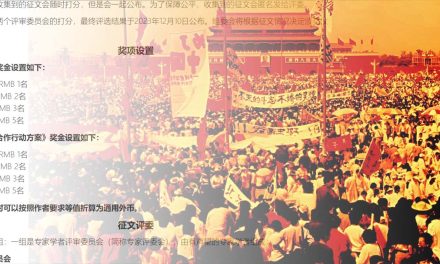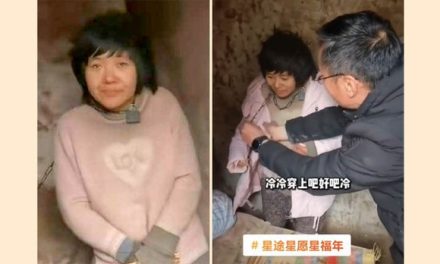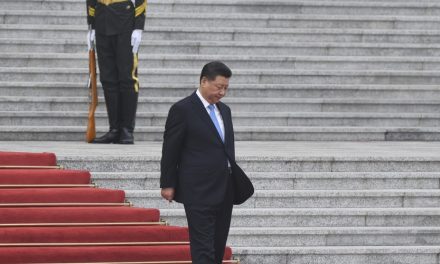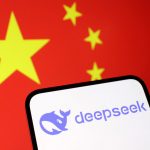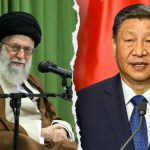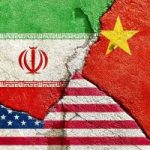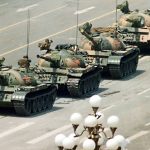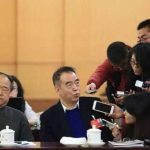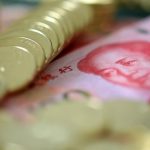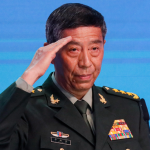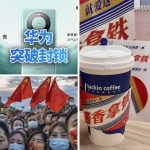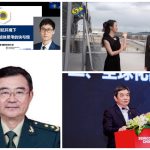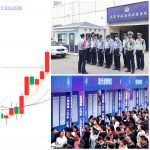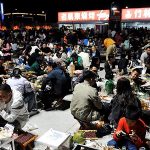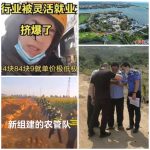BY BRADLEY A. THAYER AND LIANCHAO HAN
As the global public health crisis continues, it is useful to reflect that its cause is the actions and policies of the Chinese Communist Party (CCP). Their conduct has been reprehensible. They have suppressed whistleblowers and information, destroyed lab samples and prevented the Centers for Disease Control and Prevention (CDC) and World Health Organization (WHO) from gaining access when it might have blunted a global outbreak.
Let’s examine the timeline of the origins of the novel coronavirus (COVID-19). Last December, China knew the virus was transmitted human to human. Between Dec. 27, 2019, and Jan. 5, 2020, five firms and institutions detected a SARS-like coronavirus that caused pneumonia among people in Wuhan. The researcher who first sequenced the virus exclaimed that it could be more prevalent than the plague. One tester mistakenly reported that the virus was SARS. As a result, the Wuhan Health Commission issued an internal urgent notice about the virus and reported it to China’s central government, while telling the public that no clear evidence existed for person-to-person transmission.
This caused at least eight medical professionals to sound the alarm to the public. Chinese police censured these “rumor-mongers” and silenced any other whistleblowers. On Dec. 31, China’s National Health Commission dispatched the first group of experts to Wuhan and the WHO learned of the outbreak. We now know that by the end of 2019, there were at least 104 cases in Wuhan. With so many cases, most governments would institute an emergency response.
Instead, on Jan. 1, Hubei province health authorities oddly ordered the company that first sequenced the virus to stop testing, destroy all samples and keep information secret. Two days later, central health authorities issued a similar official order to testing facilities across the country. However, on Jan. 5, Shanghai Public Health Center also detected a SARS-like coronavirus from the Wuhan samples and reported to Shanghai and central health authorities, urging the government to take immediate action to control its spread.
The center’s CCP chief told reporters that they knew then the virus could spread through human contact and began telling doctors to take precautions. This is the reason that China’s health authorities finally launched a second-level emergency response on Jan. 6. Later, the center’s lab provided the international community with the virus’s genetic sequence for the first time, and as a result was forced to close by Chinese authorities.
By this time — but almost certainly well before — Chinese President Xi Jinping must have known what was transpiring. On Jan. 7, he hosted a CCP leadership meeting and likely was briefed by health officials about the Wuhan outbreak. We do not know exactly what was said in that meeting, of course, but from subsequent conduct and leaked information, we know that China began to take measures to stop the outbreak’s progression while still concealing it from the public. Xi ordered that officials must not spoil the atmosphere of the Spring Festival, the Chinese New Year, during which about 3 billion national trips take place. This is perhaps the primary reason that Chinese authorities and media deliberately misled the public about contagion.
During a critical window of time between Jan. 6 and Jan. 19, Wuhan reported no new cases as the city and Hubei province proceeded to open their “two sessions” — the annual plenary meetings and the Chinese people’s political consultative conferences, with over 2,300 delegates in attendance. The Wuhan government insisted on proceeding with a lunar year banquet on Jan. 18, where 40,000 families gathered to share home-cooked food. Other official new year celebration events didn’t end until the city closed down on Jan. 23.
Based on statistics in the New England Journal of Medicine, we estimate there were about 300 cases of COVID-19 confirmed during this time. The official number of 41 as of Jan. 19 is certainly false. Media reports have revealed that government health officials discouraged Wuhan doctors from reporting new cases at the time, although tellingly, internal measures were taken to check passengers at airports and rail stations.
Chinese health authorities insisted that the virus did not spread from human to human until Zhong Nanshan with the National Health Commission announced human-to-human transmission on Jan. 20. Yet even Dr. Zhong played down the dangers and ensured that China would not have a repeat of the 2003 SARS outbreak. Wuhan’s mayor later explained in an interview that without authorization he could not release information. He implied that only after Xi decided on Jan. 20 to go public could Wuhan order its lockdown on Jan. 23.
By then it was too late. Five million people had left the city, starting the global spread of the virus.
Even as other countries reported COVID-19 cases, China and the WHO continued to mislead the world by minimizing the threat. The WHO required that the virus be called COVID-19, rather than a term that would associate it with China, and refused access to international experts including the CDC. Xi called many state leaders, including President Trump, to advance a benign narrative of what was a dire situation.
As a consequence, the world was duped into lowering its guard. Xi portrayed himself as a competent ruler who had matters under control. According to the CCP narrative, his personal direction of the anti-pandemic campaign rescued China from catastrophe and heroically bought time for the rest of the world to fight the pandemic.
People have questioned China’s mismanagement of this crisis. China launched a global propaganda campaign to blame the United States and Italy for bringing the virus into Wuhan. Using social media platforms, China spreads false information that contributes to considerable anxiety among Chinese Americans. China has used medical supplies it manufactures — masks, ventilators and other equipment needed to treat COVID-19 patients — as leverage to censor critics. Geng Shuang, spokesperson of China’s Foreign Affairs Ministry, publicly declared to the world that those who are unfriendly to China cannot get the masks it produces. Those who received China’s supplies, such as Spain, Czechia and the Netherlands, found that testing kits were 70 to 80 percent inaccurate and many masks were defective.
What we now know about the outbreak in China largely is because of the work of Chinese journalists and netizens who refused to be silenced. Over 41 investigative reports by journalists have been deleted and banned. Citizen journalists such as Chen Qiushi, Fan Bin and Li Zehua are still in police detention. The world will not know the full truth until they are released and free to explain how the CCP allowed the pandemic to happen.
This article first appeared in The Hill on 04/03/20 8:00 AM ET

